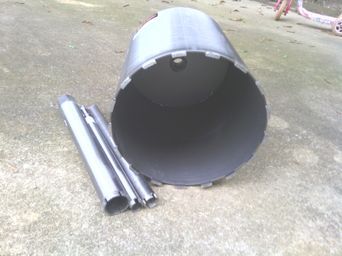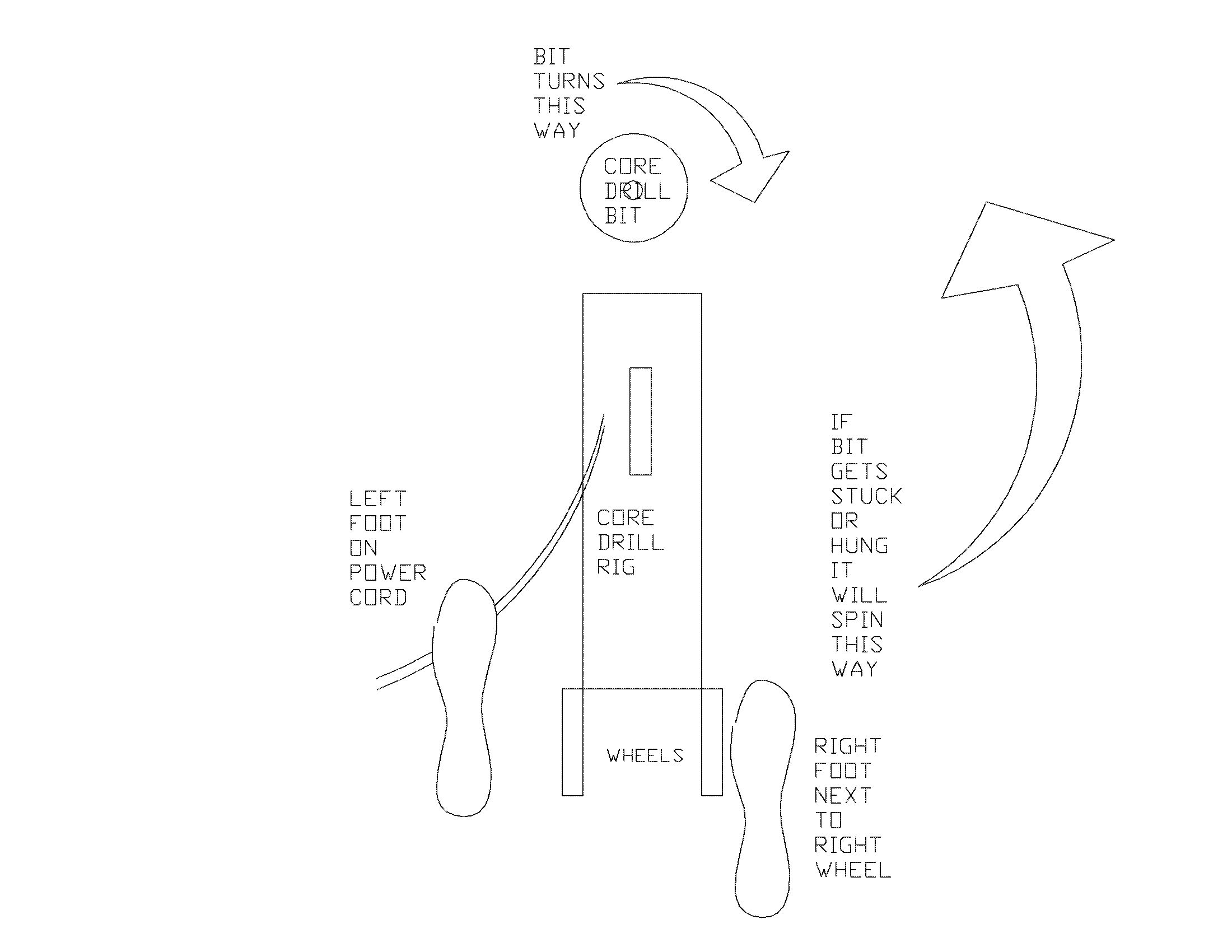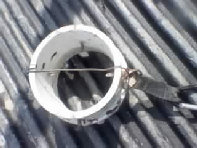How to safety stand on your core drill rig.
(Disclaimer ) This is non standard, and possibility dangerous methods used to core drill. Use this advice only if you are an experienced core drill operator, and then only at your own risk.
A ) Always stand to the left of the drill. The Core drill motor spins the core drill bit clockwise. If the core drill bit gets hung up for some reason the core drill rig will always spin to the right.
B ) Position the power cord tight to the left under your boot so that if the core drill does spin the power will disconnect itself and stop the drill from turning.
For this reason don't use locking electrical plugs ONLY.
If you are able use electrical adapters that will let the power cord totally disconnect from the core drill power box or motor if the drill starts to spin away from your very stout left foot on the power cord.
C ) Do not ever actually stand on your core drill rig, stand beside it.
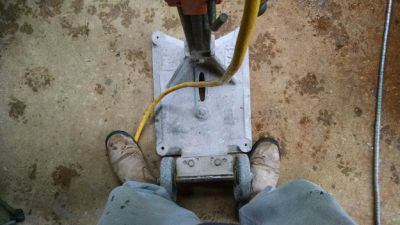

When you go to core drill your first hole in concrete there is bound to be some mental tension and apprehension if this is something that you have NOT done before.
Vacuum base's, core drill bits, core drill rig, hole diameter VS. drill speed. These are all questions you may have.
First Lets talk some about the vacuum base and what it is used for.
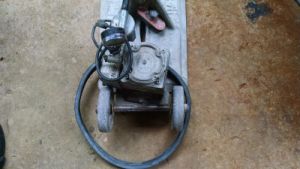
In a perfect world the vacuum base attached to the core drill rig would suck the core drill down tight every where you needed to core drill a concrete hole. But it don't and won't in every situation. If the concrete is smooth and revetively flat the vacuum base will suck down to the concrete surface and hold the drill perfectly still and rigid while you drill the hole. But often this is not the case. Some simple and usually easy items to find to fix this problem may be mud. Mud can be used to pack around the bottom of the core drill base where the rubber gasket could be losing vacuum. This trick works good where line breaks are in the concrete.
Otherwise you may be in an area trying to core drill where the vacuum base just won't work.
If this is the case you can remove the vacuum base altogether and use a 4 to 5 inch concrete wedge anchor, or even a 1/4 inch x 4 inch masonary screw, to hold the core drill rig in place while you core drill. Tools for this task would be a hammer drill, hammer, wedge anchor and socket set or crescent wrench to tighten the anchor down. If you are planning to remove the wedge anchor after you have drilled a grinder may be needed too. This method works great where you can not get vacuum to the concrete.
But wait. What if you can't get vacuum and can for some reason use a wedge anchor to fasten the core drill down? Well...
Stand on it. Or better yet, NEXT to it. This is probably breaking the #1 rule that is posted on each core drill when sold new and definably in the core drilling manual.
But at time it is the only thing that will really work. Of course when even breaking the rules there are some basic's you should pay attention to.
Especially if you are core drilling on a balcony or dangerous place.
Being innovative is how we work.
Learn core drilling do's and do not's in our What is Concrete core drilling section
Concrete core drilling is construction type work, Commericial or residential or both.
You might wonder, exactly how does it differs from other types of
construction tasks commonly used in todays modern construction methods.
Concrete core drilling with a diamond bit is the process of which one uses a
large high speed drill to drill Clean, Non-destructive holes in concrete. The drill bit used
to drill is hollow, which is where the core part comes in because
instead of a regular hole like you get with a solid steel drill bit the
center is left to be knocked out later after the desired core drilling depth is
reached.
12 inch core drill shown.
Core Drilling can be either wet or
dry.
Normally we in Charlotte, NC wet core drill most materials, and
use a SDS roatary hammer drill when dry drilling.
Wet core drilling involves using water as a cooling agent as the
core drill bit cuts a hole the material. Most core drill bits are
embedded with bits of diamonds (in the teeth of the bit only) for
cutting steel and other hard substances that may be in the
concrete, brick or block you are drilling.
